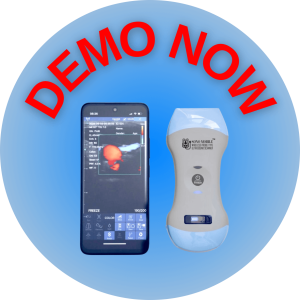Mobile ultrasound technology significantly enhances vascular access procedures by providing real-time, high-resolution imaging of blood vessels. Here’s how it can help:
- Improved Visualization: Mobile ultrasound allows healthcare providers to clearly visualize veins and arteries, making it easier to identify the best vessel for cannulation, especially in patients with difficult vascular access.
- Increased Success Rates: By providing a detailed view of the target vessel and surrounding structures, ultrasound guidance increases the success rate of vascular access procedures on the first attempt, reducing the need for multiple needle sticks.
- Enhanced Safety: Ultrasound guidance reduces the risk of complications such as arterial puncture, hematoma formation, and pneumothorax by allowing precise needle placement and avoiding critical structures.
- Identification of Suitable Vessels: It helps in assessing the size, depth, and patency of veins, ensuring that the chosen vessel is suitable for the intended procedure, whether it’s for intravenous (IV) access, central line placement, or dialysis catheter insertion.
- Real-Time Guidance: During the procedure, real-time imaging provides continuous feedback, allowing the clinician to make adjustments as needed to ensure accurate needle placement and catheter insertion.
- Assessment of Blood Flow: Doppler ultrasound can assess blood flow within vessels, helping to identify any occlusions or thrombi that could affect the procedure or necessitate a different approach.
- Patient Comfort and Satisfaction: By increasing the success rate and reducing the number of needle punctures, ultrasound-guided vascular access improves patient comfort and overall satisfaction with the procedure.
- Training and Education: Mobile ultrasound is an excellent tool for training and educating healthcare providers in vascular access techniques, allowing them to practice and refine their skills with visual feedback.
- Application in Difficult Cases: It is particularly useful in patients with challenging vascular access, such as those with obesity, edema, or a history of IV drug use, where traditional palpation methods may fail.
- Versatility: Mobile ultrasound can be used in various settings, including emergency rooms, intensive care units, outpatient clinics, and even in-field or remote locations, providing flexibility and convenience for vascular access procedures.
- Reducing Procedure Time: The use of ultrasound guidance can streamline the vascular access process, reducing the overall procedure time and allowing for more efficient patient care.
Overall, mobile ultrasound enhances the accuracy, safety, and efficiency of vascular access procedures, benefiting both healthcare providers and patients.



